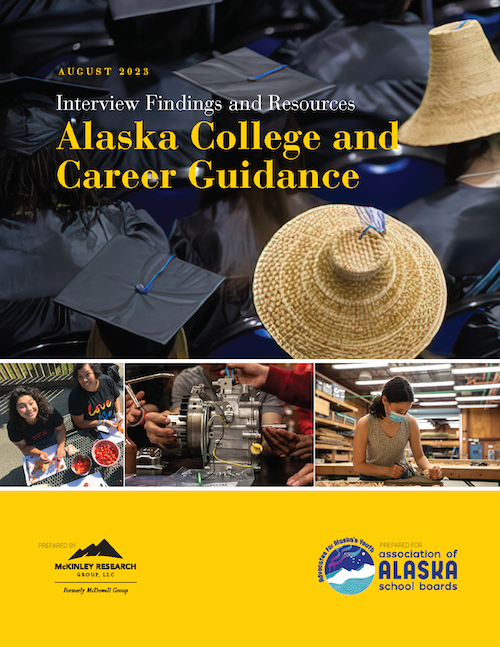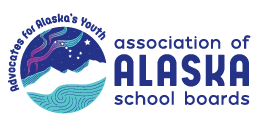Are your students ready for life after high school?

Conditions for Learning team
As a school board member, you’ve probably kept a close eye on metrics like attendance, test scores, and graduation rates. But then what? Are your students ready for life after high school?
AASB’s Alaska College and Career Guidance Report explores some of the challenges that are students face when they graduate, and how to help them connect to meaningful opportunities.
The stats in Alaska are sobering. One out of nine high school seniors will earn a bachelor’s degree in the next six years. We also have one of the nation’s highest rates of “disconnected youth” – young adults ages 16 to 24 not connect to school or work.
We need all of our young people to be trained, ready to join the workforce and prepared to take on important leadership roles in our community (like being a school board member!). When young adults are connected, contributing, and have a sense of purpose, they have better mental health and engage in fewer risky behaviors.
Here are a few ways your school board can help ensure your students are ready for what’s next:
Set goals that prepare students for life after high school… and keep an eye on progress

These questions and data sources that can help you monitor progress toward postesecondary preparation:
- How are your graduates faring? The Alaska Commission on Postsecondary Education can share reports for free from the National Student Clearinghouse which tracks graduates for six years after high school. Email eed.acpe-execdirector@alaska.gov to find out more.
- Who is accessing financial resources? The Alaska Performance Scholarship annual report lists how many students from your school district are eligible for using this merit-based scholarship.
- Are your students accessing financial resources? The FAFSA Tracker shows real-time completion rates for each district and high school.
- Are you offering equitable opportunities? Is the percentage of students in AP and dual enrollment courses proportionate across race and socioeconomic classes?
- Are students and families talking about education after high school and career options? The School Climate and Connectedness Survey poses these questions to middle and high school students and families.
- Are your students showing growth? The MAPS assessment can help you focus on this metric.
Include social & emotional learning (SEL) and culturally affirming approaches in your curriculum
What skills are employers looking for? They want employees who are coach-able, have good communication skills, are curious, and employees that are responsible. Whether we call these SEL, life skills, or professional skills, they are an important part of helping students prepare for life after high school. Decades of research have also found that students who have a strong sense of positive cultural self identity fare better in college. Check out the Rethinking Readiness for tools to assess how well you nurture culture as postsecondary strength for Alaska Native students.
Provide explicit navigation support

Career Guides dedicated to helping students plan for life after high school – whether applying for college & financial aid or connecting to an employment opportunity – are linked to better postsecondary outcomes. When Bethel Regional High School had a dedicated career guide, postsecondary enrollment rates jumped to 65%. Currently just one-third of Alaska’s high school graduates enroll in college in the year after high school.
Some school districts have recently included career guides in their budget; others partner with Tribes and community organizations to help high school students navigate the complex postsecondary landscape.
Partner to connect families and students with money for college & career training
Each year Alaskan students leave up to $6 million on the table just by failing to fill out the Free Application for Federal Student Aid. The FAFSA application process has recently been revised to make it “easier” – but chances are good that families and students will still need support applying, whether that’s provided by individual career guides or during community supported FAFSA events.
Other scholarships like AASB’s June Nelson Scholarship (now open!) can help student’s tap into funds for travel, books, and the other costs that might not be covered by financial aid.
Make a plan

One of the biggest challenges school districts face is ensuring that all students get the support they need to prepare for life after high school, not just senior year, but throughout their educational journey.
AASB’s Conditions for Learning Team can help your district step up its postsecondary game plan by:
- Gathering and analyzing data
- Facilitating a postsecondary inventory and planning sessions
- Offering effective strategies for engaging families and students in planning for life after high school
To learn more, visit the AASB Helping Students Prepare for Life After High School web page or contact Emily Ferry, 907 463-1660.
